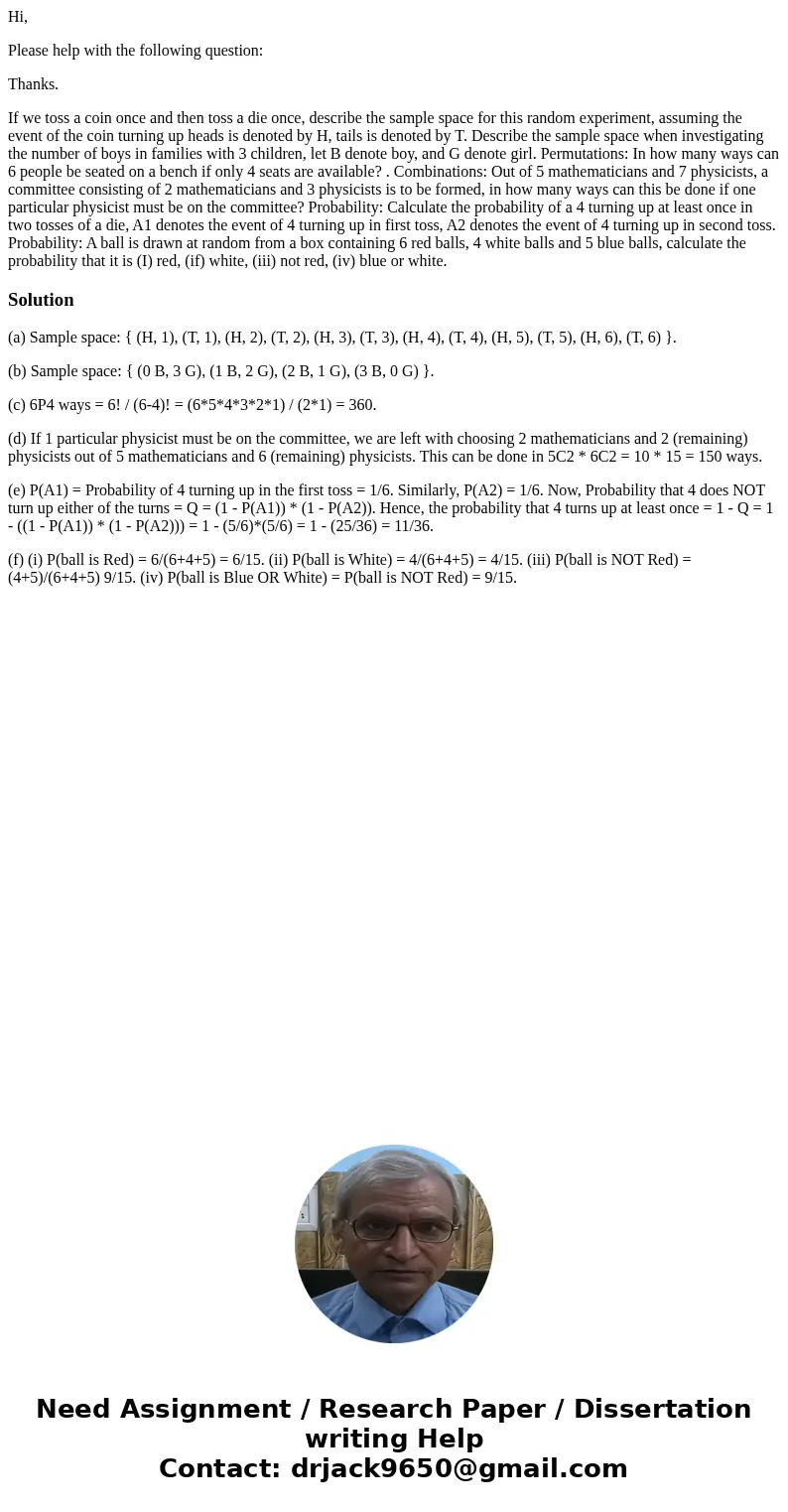Hi Please help with the following question Thanks If we toss
Hi,
Please help with the following question:
Thanks.
If we toss a coin once and then toss a die once, describe the sample space for this random experiment, assuming the event of the coin turning up heads is denoted by H, tails is denoted by T. Describe the sample space when investigating the number of boys in families with 3 children, let B denote boy, and G denote girl. Permutations: In how many ways can 6 people be seated on a bench if only 4 seats are available? . Combinations: Out of 5 mathematicians and 7 physicists, a committee consisting of 2 mathematicians and 3 physicists is to be formed, in how many ways can this be done if one particular physicist must be on the committee? Probability: Calculate the probability of a 4 turning up at least once in two tosses of a die, A1 denotes the event of 4 turning up in first toss, A2 denotes the event of 4 turning up in second toss. Probability: A ball is drawn at random from a box containing 6 red balls, 4 white balls and 5 blue balls, calculate the probability that it is (I) red, (if) white, (iii) not red, (iv) blue or white.Solution
(a) Sample space: { (H, 1), (T, 1), (H, 2), (T, 2), (H, 3), (T, 3), (H, 4), (T, 4), (H, 5), (T, 5), (H, 6), (T, 6) }.
(b) Sample space: { (0 B, 3 G), (1 B, 2 G), (2 B, 1 G), (3 B, 0 G) }.
(c) 6P4 ways = 6! / (6-4)! = (6*5*4*3*2*1) / (2*1) = 360.
(d) If 1 particular physicist must be on the committee, we are left with choosing 2 mathematicians and 2 (remaining) physicists out of 5 mathematicians and 6 (remaining) physicists. This can be done in 5C2 * 6C2 = 10 * 15 = 150 ways.
(e) P(A1) = Probability of 4 turning up in the first toss = 1/6. Similarly, P(A2) = 1/6. Now, Probability that 4 does NOT turn up either of the turns = Q = (1 - P(A1)) * (1 - P(A2)). Hence, the probability that 4 turns up at least once = 1 - Q = 1 - ((1 - P(A1)) * (1 - P(A2))) = 1 - (5/6)*(5/6) = 1 - (25/36) = 11/36.
(f) (i) P(ball is Red) = 6/(6+4+5) = 6/15. (ii) P(ball is White) = 4/(6+4+5) = 4/15. (iii) P(ball is NOT Red) = (4+5)/(6+4+5) 9/15. (iv) P(ball is Blue OR White) = P(ball is NOT Red) = 9/15.

 Homework Sourse
Homework Sourse